Pizzoccheri alla Valtellinese (baked buckwheat pasta)
Baked pizzoccheri alla Valtellinese is an unusual but delicious vegetarian buckwheat pasta dish from the town of Teglio in the Valtellina, a very beautiful and fertile valley in the Italian Alps. This is typical hearty and warming mountain fare, perfect for the cold season!
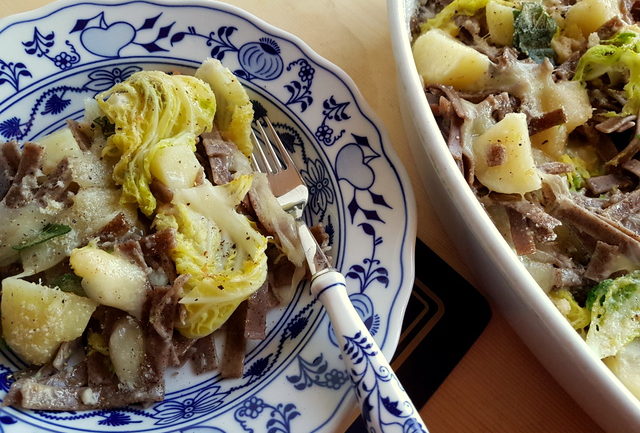
Pizzoccheri alla Valtellinese is a healthy pasta bake.
I think pizzoccheri alla Valtellinese is unusual for two reasons. Firstly, the pasta, pizzoccheri, is traditionally prepared with two-thirds buckwheat flour and a third durum wheat flour. The buckwheat is what gives it its grey/brown colour. Buckwheat is very healthy and rich in antioxidants and polyphenols. Industrially produce pizzoccheri may not have the same amount of buckwheat flour as tradition dictates. However, even twenty-five percent buckwheat produces a pasta which is not only healthier than other types but very flavourful.
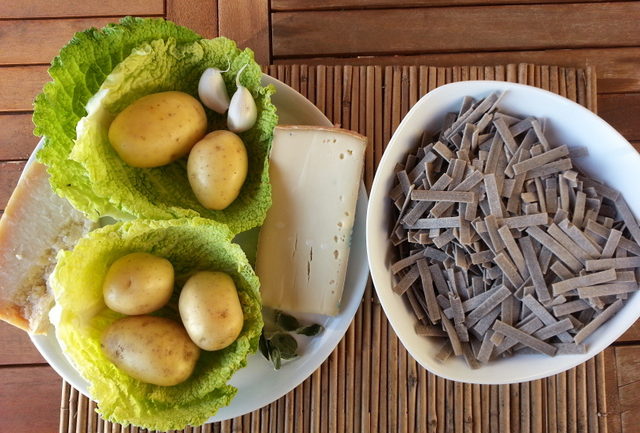
The other reason this dish is unusual is the inclusion of potatoes. Although there are a number of Italian pasta dishes with potatoes as an ingredient, they are more likely to be cooked at home than to be found on restaurant menus. Pizzoccheri alla Valtellinese, on the other hand, is the signature dish of traditional Valtellinese cuisine and is commonly on offer in trattorias and restaurants in the area.

A warming winter dish.
I think of baked pizzoccheri alla Valtellinese as an Italian version of Swiss raclette because the recipe includes quite a lot of cheese. In fact, the predominant flavours, apart from the pasta itself, are cheese and potatoes. It’s also a winter mountain dish like raclette, which is normally eaten with potatoes.
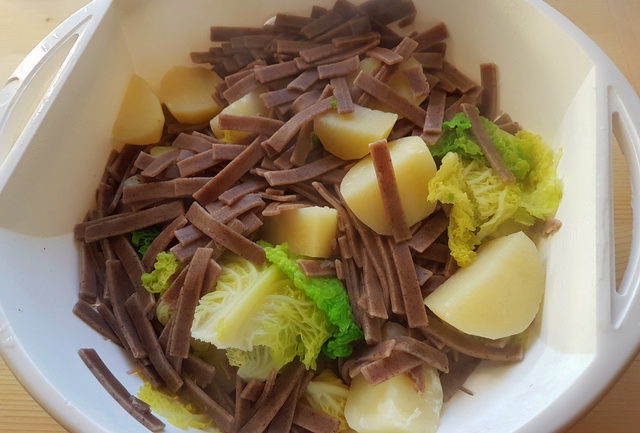
Although the seemingly simple ingredients of this pasta recipe may have you thinking it is a bland dish. You would be much mistaken. Actually it is really really good! The addition of lots of cheese and a good dose of butter, melted to a glorious frothy, golden garlicky brown, make this a tasty and satisfying dish. You won't even want dessert!
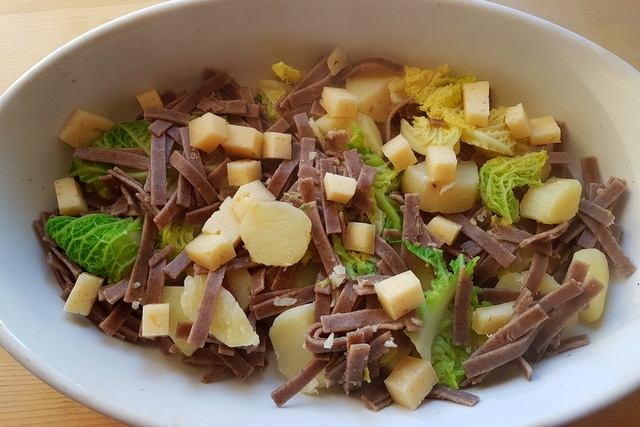
What kind of cheese?
The cheese traditionally used in pizzoccheri alla Valtellinese is either casera or bitto. Casera is a cow's milk cheese produced from milk that comes from herds in the Valtellina valley. It's produced according to a tradition that is hundreds of years old! Bitto is made from summer milk from herds grazing on the hills of the valley plus a small percentage of goat's milk. Both casera and bitto can be hard to find outside of Lombardy, the region where the Valtillena valley is located. However, you can replace them with fontina or gruyere. For my baked pizzoccheri alla Valtellinese, I used fontina.
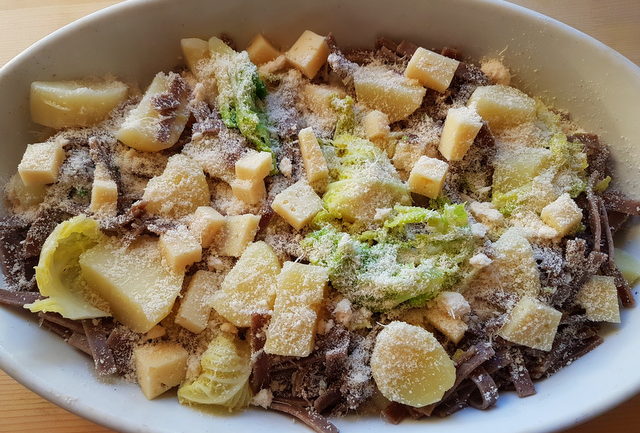
Some changes to the original recipe!
I must confess I made a couple of changes to the official pizzoccheri alla Valtellinese recipe. Yes, there’s an official recipe published by an organization called L’Accademia di Pizzoccheri di Teglio! My changes were based on other recipes I found and my husband’s partiality for pancetta! You can watch pizzoccheri being made in the Valtellina in this video from Pasta Grannies.
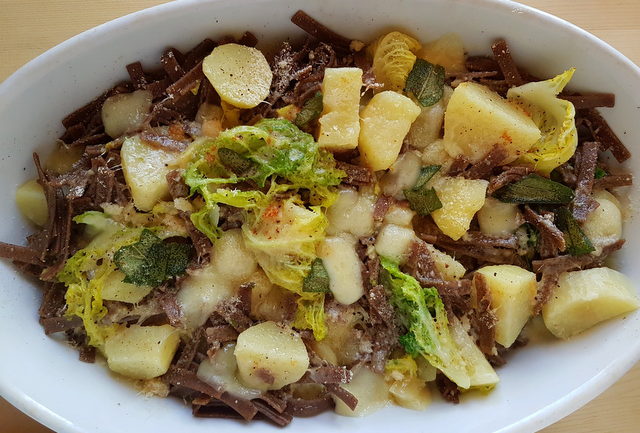
Firstly, I reduced the amount of butter and I added some sage to it because I love that salvia e burro combination. Plus, I baked the dish rather than serving it unbaked. Actually, I made two dishes. In one, I put pancetta at my husband’s request (not traditional and not vegetarian!)
The other, I left without (more traditional and vegetarian). The pancetta certainly gave it a different flavour, but I have to say I preferred the recipe without pancetta and more or less as it is intended to be. If you cannot find pizzoccheri, this recipe can also be made with other types of buckwheat or whole wheat pasta, short pasta or flat ribbons cut into pieces.
If you do try this baked pizzoccheri alla Valtellinese recipe, I’d love to hear what you think. Please write a comment here on the blog or post a comment on the Pasta Project Facebook page.
Your feedback means a lot to me!
Buon Appetito!
Pin for later.
This recipe was originally published in 2017 but has been updated.
Save this recipe for later?
If you want to save this recipe for later, you can print it, bookmark this page or save it to Pinterest.
Other warming pasta recipes here on The Pasta Project.
- Gnocchi alla Bava recipe from the Val d'Aosta
- Baked ziti or zitoni with spicy sausage recipe from Naples
- Cheesy baked pasta shells
- Baked Tuscan gnudi with tomato sauce
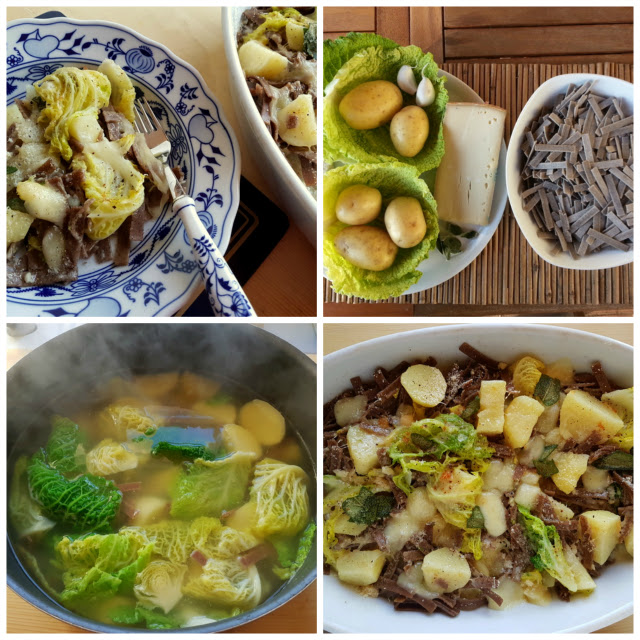
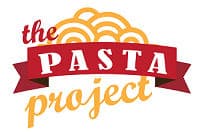

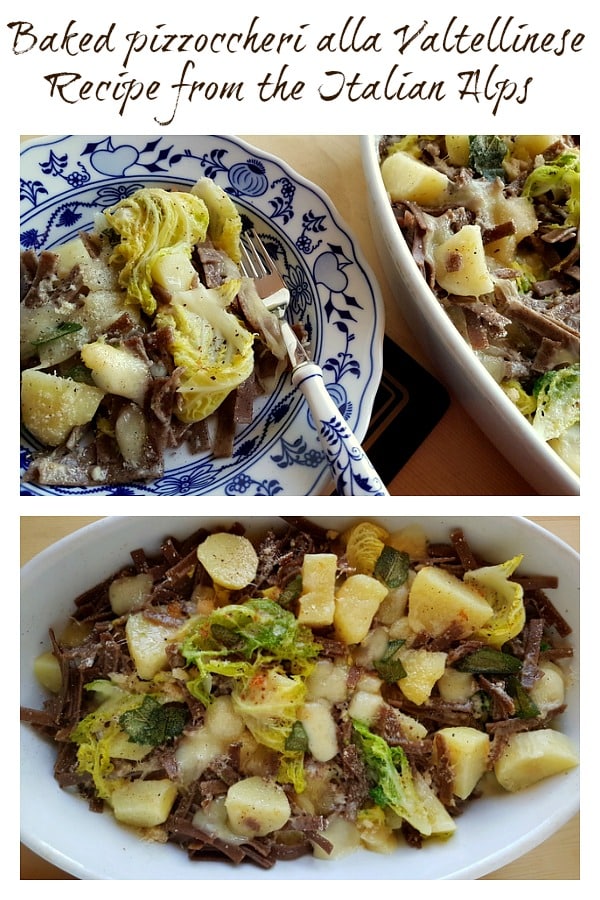
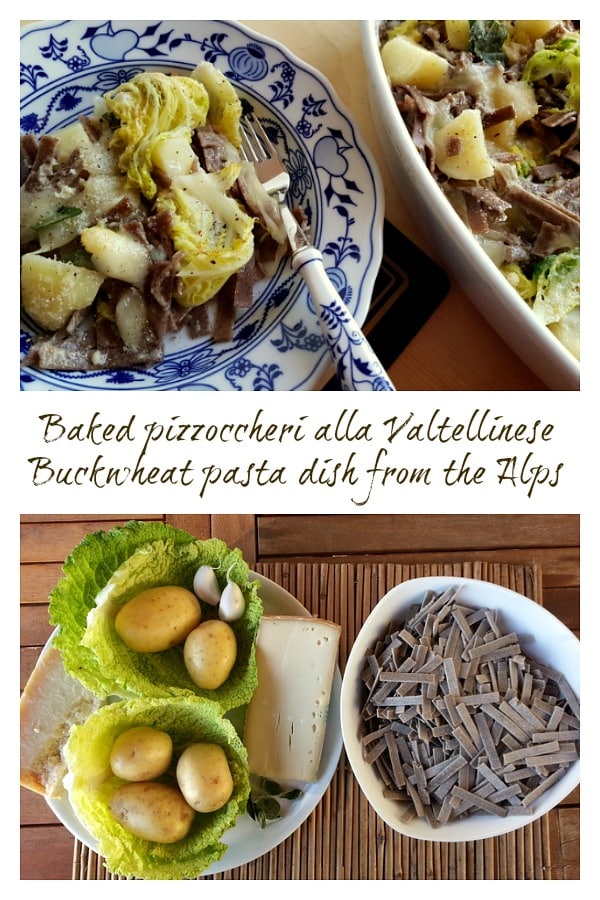

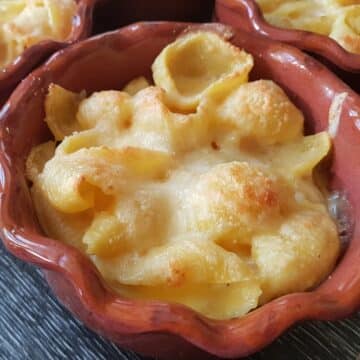
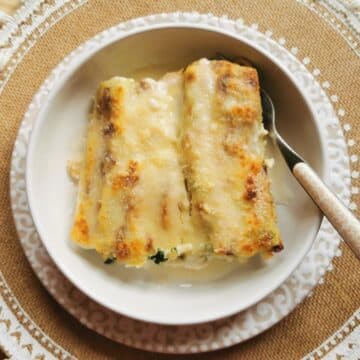
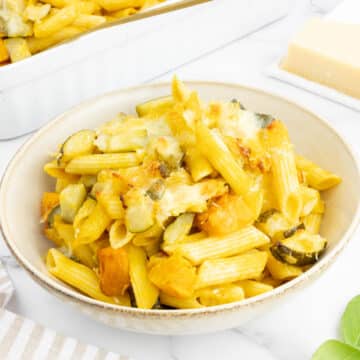
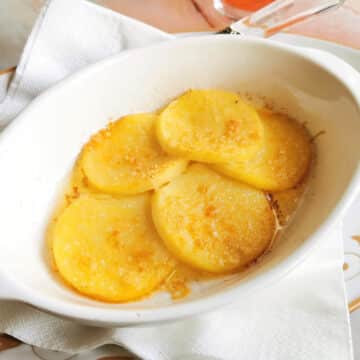
Pavani Gunikuntla says
This looks really great. I am following your blog from along time. All your recipes are very easy to understand and to prepare them.
foodopium says
Nice pasta recipe, have never had this type of pasta before will definitely try this recipe, thanks !
Alpa says
Glad I came across this post, got to learn about this new pasta dish. I am going to make it soon as it sounds kid friendly
Ai says
Looks amazing! I've never heard of pizzoccheri, and had no idea there was pasta made from buckwheat!
Nart at Cooking with Nart says
This doesn't look like any pasta dishes I've seen before. And I've never tried buckwheat pasta. Will have to find that and try it out 🙂
Lida says
I love Pizzoccheri pasta but I don't like boiling cabbage or Swiss chard. I use fresh leafs of spinach.
Cathleen @ A Taste of Madness says
I love warming winter meals. This looks so perfect for the holidays when you want some comfort food.
The Pasta Project says
Thank you, Cathleen! This is really perfect for warming you on a cold day!
Ramona says
Pasta, pancetta and potato, wow, this is heaven in my mouth and I am drooling at the moment - will make this as early as today for dinner since I have all the ingredients - will need to replace the pasta type for linguine as it is the only one I have at the moment in the house to come close to yours. yummm, I am so hungry now! Will come back to let you know how it went.
The Pasta Project says
How did it go Ramona? Hope you loved it!
Stine Mari says
I love this unusual blend of potatoes and pasta. Also great to add buckwheat flour to make it healthier and more flavorful. Fantastic dish, I can't wait to try it myself.
The Pasta Project says
Thank you, Stine!
Constance says
I love your take on the recipe. I have never had buckwheat pasta, but now I do think I'll need to keep an eye out for it!
The Pasta Project says
Thank you, Constance! I hope you find buckwheat pasta to try!
Jennifer says
I have never heard of this kind of pasta before but now I am intrigued. Your dish looks delicious and so filling!
The Pasta Project says
It's delicious and so nutritious!
Demeter says
This looks like pure comfort food! So much better than having to go out to dinner.
The Pasta Project says
Going out for dinner is lovely too of course, but you can't beat this recipe for a lovely winter warmer!
Mel says
I use buckwheat to make bread and French galettes, but have never tried buckwheat pasta. Your recipe looks absolutely delicious.
The Pasta Project says
I love the sound of your bread and galettes! And thank you, Mel!
Helen @ family-friends-food.com says
What an interesting recipe! I'll have to keep an eye out for buckwheat pasta.
The Pasta Project says
Thank you, Helen! I hope you find it!
Dannii says
That looks like a really hearty and comforting pasta dish. YUM!
The Pasta Project says
Thank you, Danni. I love hearty and comforting food in the colder months.
SAfira says
Looking forward to trying this. Love Buckwheat Pasta and can never go wrong with cheese. Sounds delicious!
The Pasta Project says
That is very true, Safira!
John Fletcher says
Hi Jacqui,
Could you tell me what temperature to set a gas oven to bake the Pizzoccheri alla Valtellinese.
Regards,
John
Jacqui says
Hi John, thank you for your comment. I have updated the recipe instructions with oven temperatures. 180°c or 350 F is the best temperature! I hope you enjoy this dish!
melve says
Your recipes are amazing and you're so good at it. Thank you for sharing this healthy and delicious recipe. Yum!
admin says
Grazie di cuore as the Italians say Melve! I'm thrilled you like my recipes! This is a great one, very traditional in the Italian Alps. Def worth trying! Have a lovely day! Jacqui
Beth says
This dish was made for me! Lots of cheese! I have never seen buckwheat pasta. Sounds like a good, healthy substitution!
admin says
Hi Beth and thank you! Yes the cheese in this dish really makes it yummy! Buckwheat pasta is a very healthy alternative to normal pasta. It's traditional in the Valtellina where this recipe comes from! All the best Jacqui
Elaine @ Dishes Delish says
Yum. I really like the changes you made to the recipe as I love pancetta too!! This looks absolutely delicious!
admin says
Thanks so much Elaine! Yes pancetta works really well in this recipe. I like it with and without! All the best from Verona! Jacqui